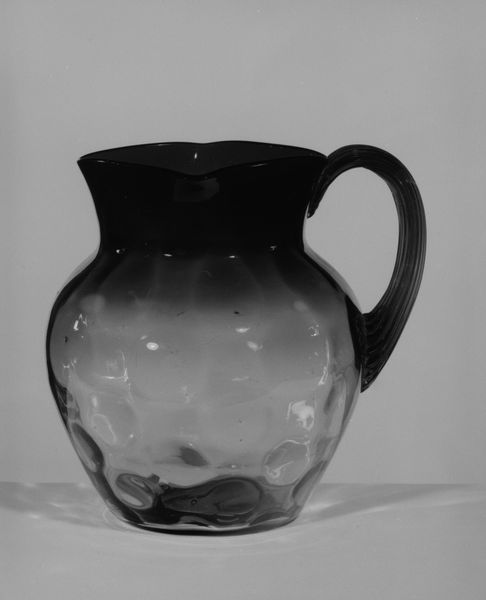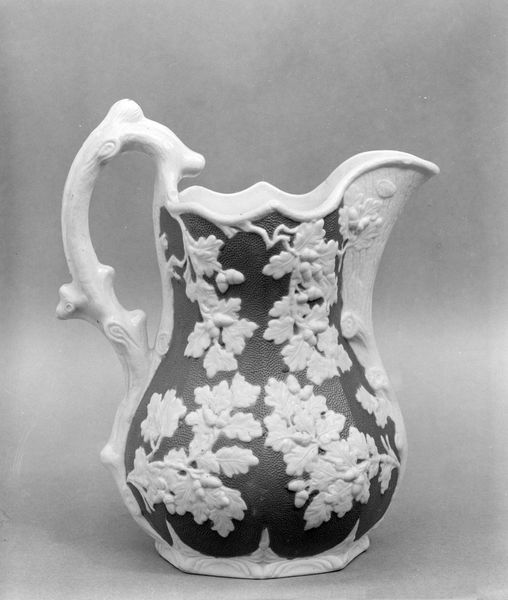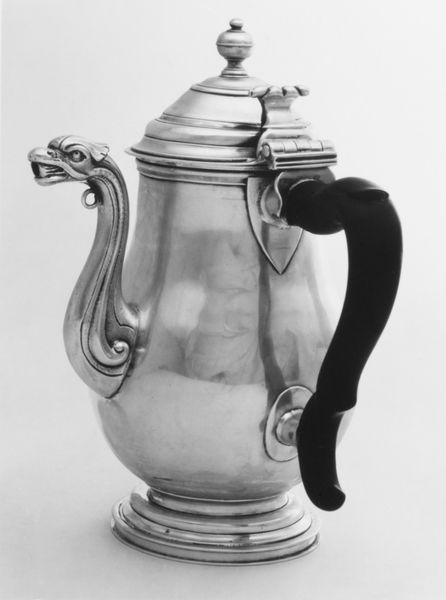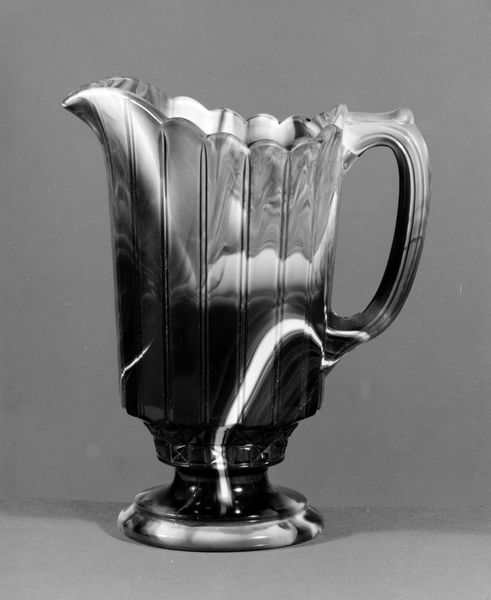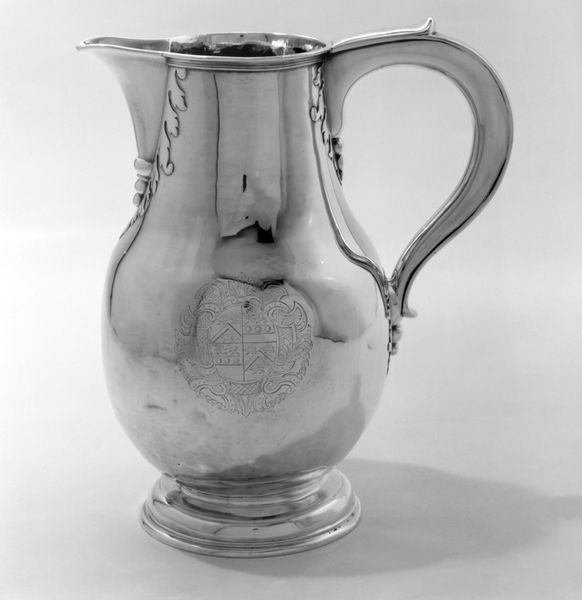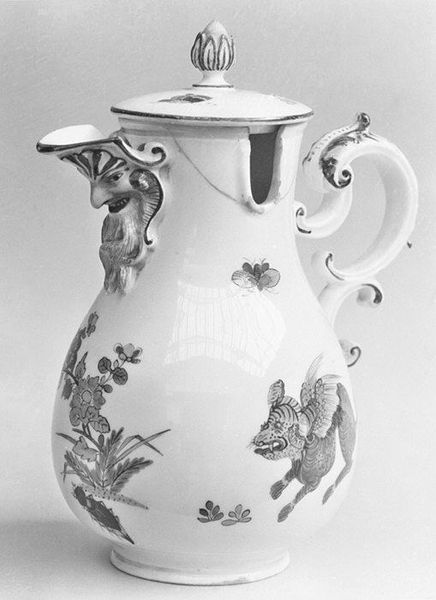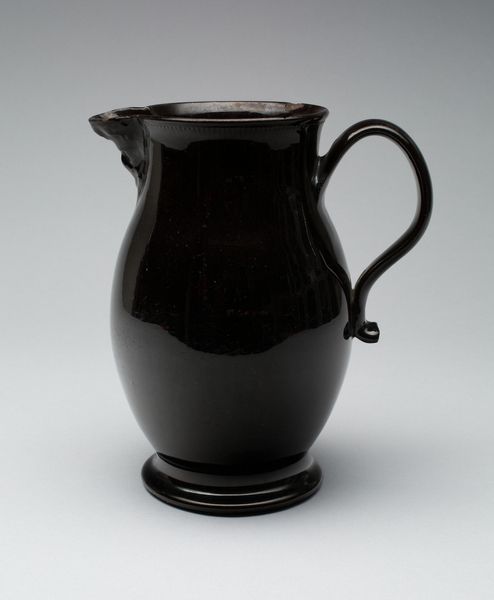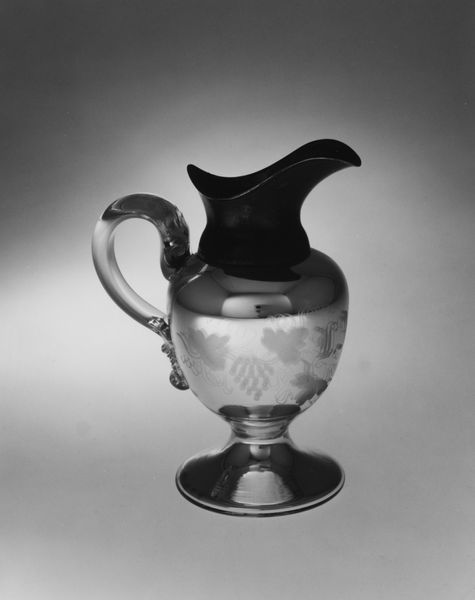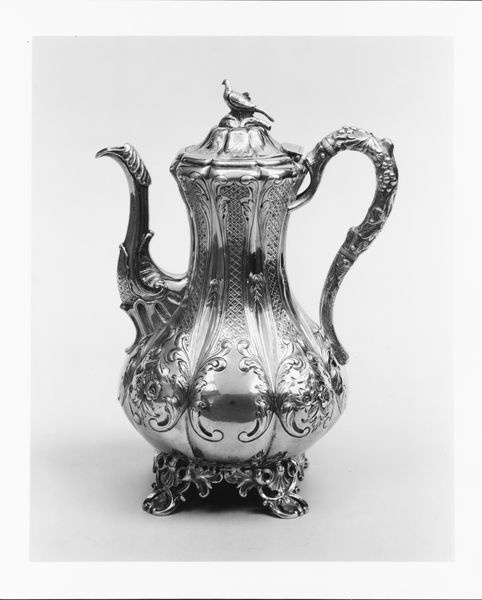
glass, sculpture
#
glass
#
sculpture
#
black and white
#
united-states
#
monochrome
#
monochrome
Dimensions: H. 4 5/8 in. (11.7 cm)
Copyright: Public Domain
Curator: This is a "Creamer," believed to be made by the Mount Washington Glass Company sometime between 1881 and 1887. It resides here at the Metropolitan Museum of Art. Editor: It’s strangely captivating. The monochrome image lends it a timeless feel, and those elegant tripod feet give it an almost creature-like quality. It appears much larger in scale than a typical "creamer." Curator: Let's observe the gradient within the glass itself. There's a distinct shift in tone as your eye travels upwards from its base. And the deliberate curves of the handle—notice how they perfectly counterbalance the overall volume of the vessel. Semiotically, each element signifies a refined aesthetic, characteristic of the late 19th century. Editor: While it’s aesthetically pleasing, I can't help but consider its place in society at the time. Was it accessible to all, or merely an indulgence for the wealthy? This glass is undeniably beautiful, but the labor and resources needed for such a luxury would likely point to the class divisions of the era. And who was it created for? Curator: One could argue the visual emphasis isn't on overt symbolism, but rather the formal properties—the texture of the glass, the refraction of light, the sophisticated shaping. The material speaks for itself, an impressive achievement of glassmaking. Editor: I disagree, objects never simply “speak for themselves.” How many marginalized voices were silenced while those achievements were made? We must always examine the social framework alongside artistic skill, as gendered division of labor would dictate that many artisans’ work was attributed only to male business owners or designers. The creation and context are always bound together. Curator: An intriguing proposition. Perhaps our disagreement serves to highlight the rich potential within this piece for divergent interpretations. Editor: Absolutely. It reminds us that a single object can serve as both a source of aesthetic wonder and a lens through which to interrogate social dynamics.
Comments
No comments
Be the first to comment and join the conversation on the ultimate creative platform.

